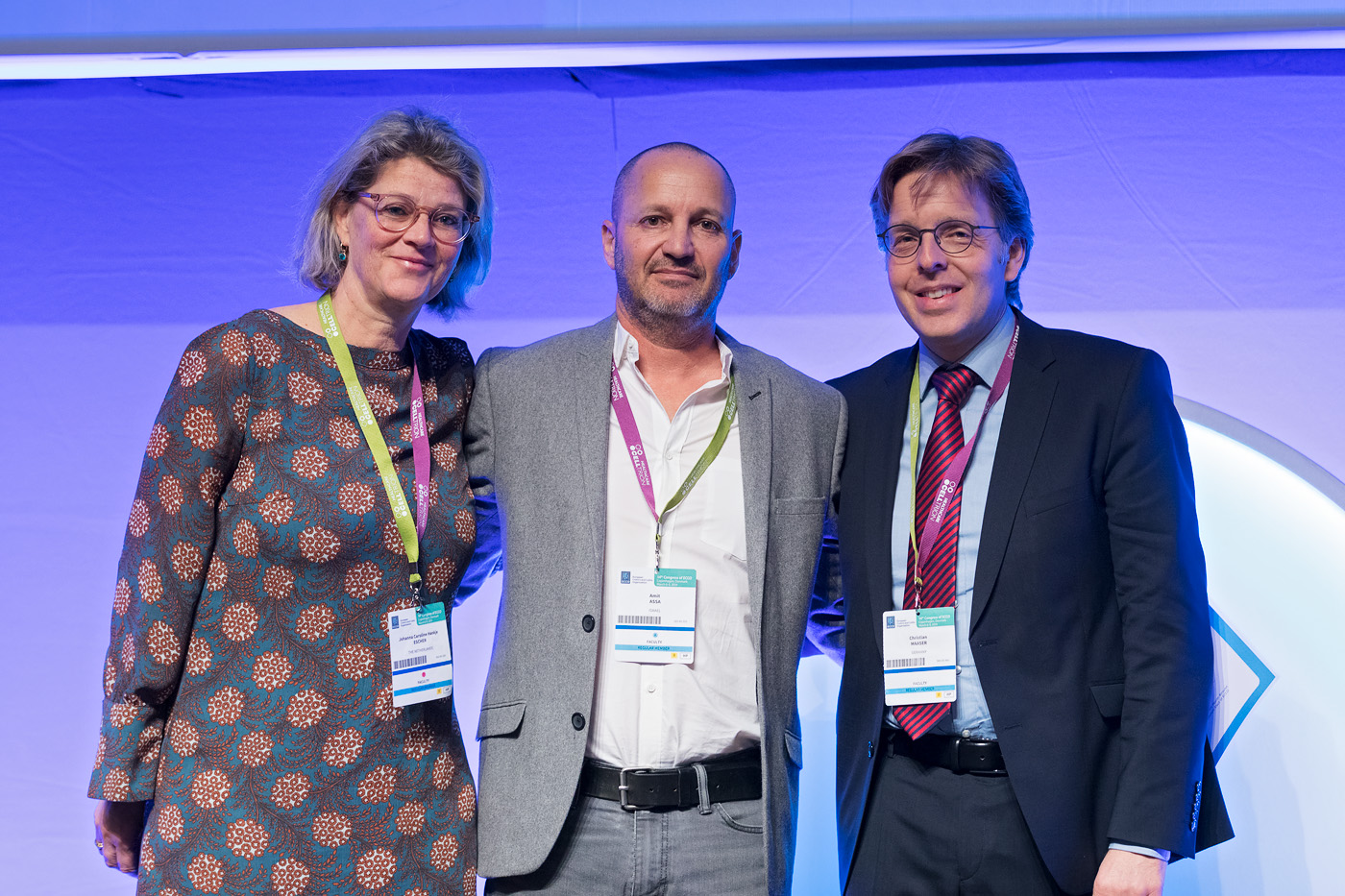Report from IIS Award Winner 2019: Amit Assa
Amit Assa, P-ECCO Member
Proactive adalimumab trough measurement is associated with improved treatment outcomes in children with Crohn’s Disease: The PAILOT randomised controlled trial
 Amit Assa © ECCO |
Loss of response (LOR) during anti-TNF treatment for Crohn's Disease (CD) is commonly approached through the measurement of trough concentration (TC) and anti-drug antibodies, with subsequent modification of treatment (reactive therapeutic drug measurement, TDM). It is appealing to speculate that tailored treatment based on routine TC and antibody measurements (proactive TDM) may assist in sustaining adequate drug levels and thus in improving efficacy and preventing the evolution of anti-drug antibodies. Nevertheless, two randomised controlled trials, the TAXIT [1] and the TAILORIX [2], have failed to demonstrate superiority of level-based over clinically based adjustment of infliximab treatment. To date, there are no prospective studies comparing proactive vs reactive TDM in paediatric CD nor are there any studies evaluating the proactive approach among adults or children treated with adalimumab. Hence, we aimed to investigate the effect of proactive drug monitoring-based treatment, in comparison with clinical and biologic-based monitoring of disease activity in children with CD treated with adalimumab.
We conducted a non-blinded randomised controlled trial in biologic-naïve children (6–18 years) with luminal CD, who responded to adalimumab induction. All patients in both the proactive and the reactive group were initially scheduled to receive maintenance adalimumab treatment every two weeks, either 40 mg in children weighing ≥40 kg or 25 mg/m2 body surface area in children <40 kg. Patients were randomised 1:1 at enrolment into the two groups as follows: In group 1 (proactive group, n=38), patients were assessed during each visit (weeks 4, 8 and every eight weeks thereafter until week 72) for clinical and biologic disease activity while treating physicians were also informed of the adalimumab TC for all patients. Adalimumab treatment was adjusted to achieve a target adalimumab TC of at least 5 µg/ml regardless of clinical or biologic activity. In group 2 (reactive group, n=40), patients were also assessed during each visit for clinical and biologic disease activity but physicians were informed of the TC only in cases of clinical or biologic LOR, with subsequent intensification of adalimumab treatment only in patients with LOR and TC <5 µg/ml. All patients were under tight control based on clinical, C-reactive protein (CRP) and faecal calprotectin assessment. LOR was defined as a Paediatric Crohn's Disease Activity Index (PCDAI) ≥10 and/or CRP >0.5 mg/dl and/or calprotectin >150 µg/g. The primary endpoint was sustained corticosteroid-free clinical remission at all visits from week 8 to week 72.
We found that the primary endpoint was achieved by significantly more patients in the proactive group [31/38 (82%) vs 19/40 (48%); p=0.002] and that a composite outcome of sustained (weeks 8–72) corticosteroid-free remission, CRP ≤0.5 mg/dl and calprotectin ≤150 µg/g was similarly higher in this group [16/38 (42%) vs 5/40 (12%); p=0.003]. Adalimumab intensification rate by week 72 was significantly higher in the proactive group than in the reactive group [33/38 (87%) vs 24/40 (60%); p<0.001], with higher mean adalimumab concentrations and fewer adalimumab TC measurements below the defined threshold. Most intensifications in the proactive group were triggered by a low TC before any clinical or biologic LOR.
We concluded that proactive TDM together with tight disease control is superior to tight control combined with reactive measurements and results in higher corticosteroid-free sustained remission rates.
References
- Vande Casteele N, Ferrante M, Van Assche G, et al. Trough concentrations of infliximab guide dosing for patients with inflammatory bowel disease. Gastroenterology. 2015;148:1320–9.
- D'Haens G, Vermeire S, Lambrecht G, et al. Increasing infliximab dose based on symptoms, biomarkers, and serum drug concentrations does not increase clinical, endoscopic, or corticosteroid-free remission in patients with active luminal Crohn's disease. Gastroenterology. 2018;154:1343–51.
 Amit Assa at ECCO'19 © ECCO |